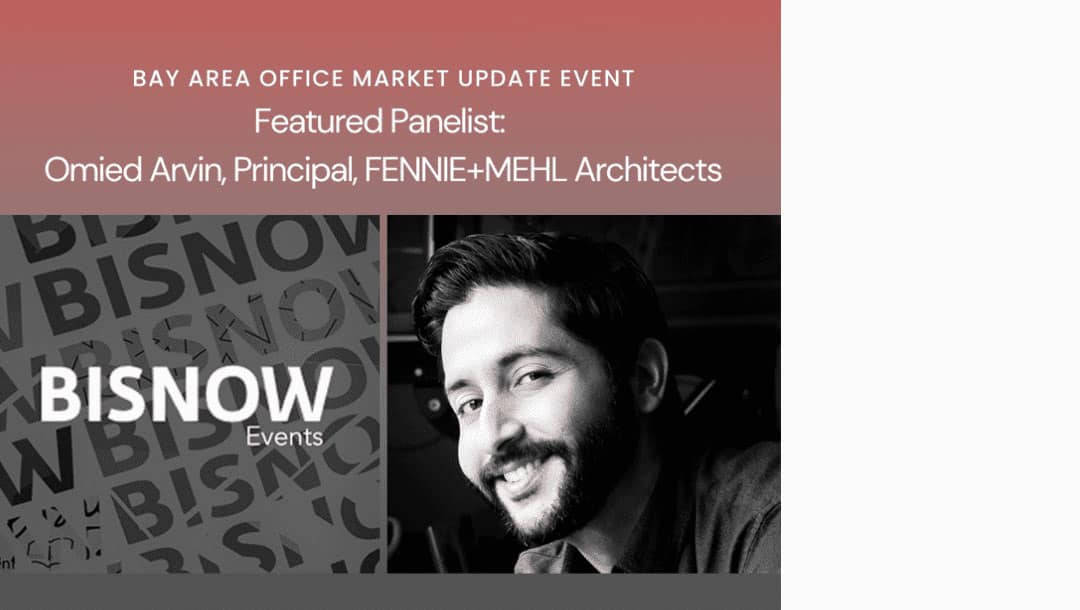23 Jan
Behind the Design: F+M on Bisnow Panel
FENNIE+MEHL Principle Omied Arvin joined industry leaders in a Bisnow panel discussion to discuss leasing trends, the return to office, tenant requests, and how they are meeting the needs of a changing workforce. As the sole architect/designer on the panel, Omied was asked to provide his insights into what the workplace of the future looks like from a development, construction, and design perspective. Here are a few tidbits from that discussion.
Q: What aspects of workplace design worked vs didn’t work before the pandemic, and how is it evolving post-pandemic?
Something I’ve observed is the way we’re approaching design hasn’t really changed much since before the pandemic. For example, visioning and programming sessions have always been critical, because they establish a foundation for a company’s cultural and functional requirements which informs the design. What has evolved is the questions we are asking and the conversations we are having with key stakeholders during these meetings.
There were many articles in 2020 and 2021 with headlines like “The Open Office is Dead.” The truth is, the open office is not dead, but the badly designed open office sure is. Disregard for acoustics, visual privacy, and providing a diverse set of enclosed and semi-enclosed spaces for users to retreat will certainly result in a poor open office experience. But if these elements are designed intelligently and thoughtfully, the open office can be a productive and engaging work environment for many types of organizations.
What does the future of “hybrid” work look like in the physical office?
The term “hybrid” has been thrown around a lot and, at first, many people saw it as simply dividing their time between working in the office and working remotely. However, if work policies and the physical workspaces aren’t designed to support a hybrid work environment, it could potentially be a bad experience for many people. For example, being asked to come into the office just to be on Zoom calls all day. That might not be the best reason for being on site that day. Gradually, as more people return to the physical office, our clients are increasingly aware of how important it is to understand how to support employees in and out of the office, and how that allows them to do their best work.
What final piece of advice would you give to leaders of companies?
Use this time as an opportunity to experiment with your workplace, both from a physical design and from a work policy standpoint. Ask your employees about their experience with working, both in the office and from home or elsewhere. The pandemic taught us that the only thing we can expect is the unexpected. So rather than falling back to old habits, let’s use this time to learn and optimize.

